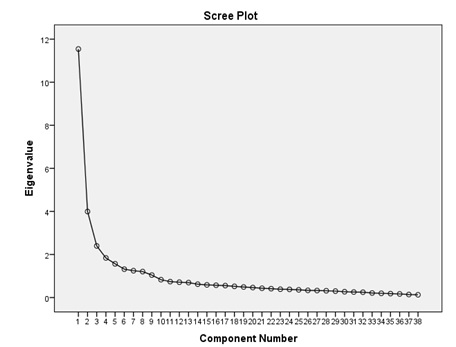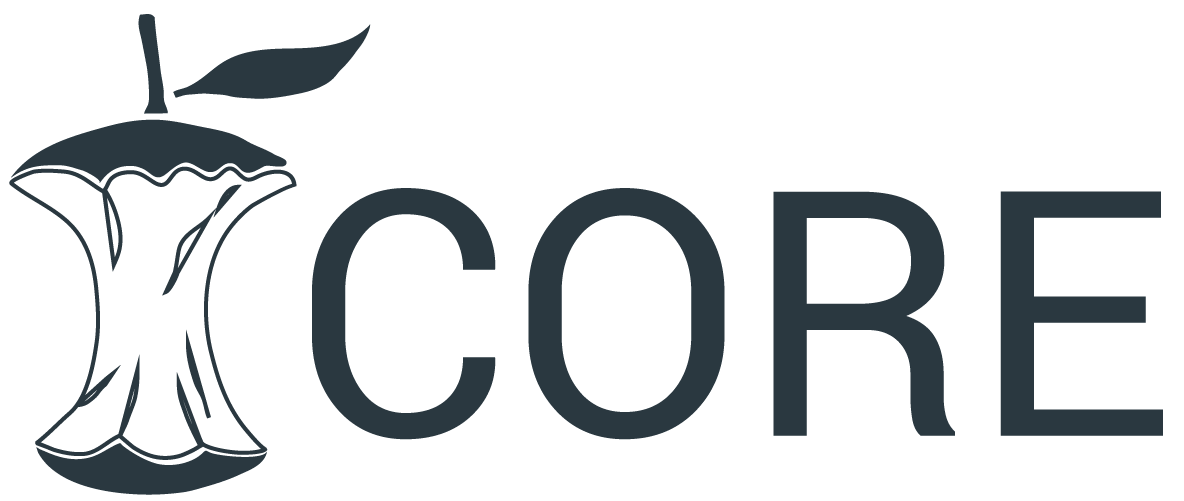Reviewing the Factors Distressing Consumers Buying Behaviour During COVID-19 Pandemic with Special Reference to Kolkata using Principal Component Analysis
DOI:
https://doi.org/10.54741/mjar.3.2.1Keywords:
principal component analysis, kmo, bartlett, consumers buying behaviour, kolkata, pandemicAbstract
The authors make an effort to empirically reviews the factors distressing consumers buying behaviour during the COVID-19 pandemic with special reference to Kolkata by applying the principal component analysis. The study is conducted from August 29, 2022, to February 6, 2023, using a convenient sampling technique. Different statistical tests like principal component analysis (PCA), Cronbach’s alpha, along with frequency statistics are used for the analysis of the data using IBM SPSS Statistics 21. The study is both primary and secondary in nature. The Kaiser-Meyer-Olkin Measure of Sampling Adequacy is close to 1 and Bartlett's Test of Sphericity is significant in nature. Moreover, 9 factors were retrieved from the existing 38 questions. Hence, it was concluded that the factors of taste and preferences, discouraging offline purchases, after-sale service, purchasing decision, the role of reference groups, change in purchase behaviour, searching the information, the role of family members, and meeting expectations are the decisive factors distressing the consumer buying behaviour in Kolkata during the COVID-19 pandemic.
Downloads
References
Arafat, S. M. Y., & Kar, S. K., Marthoenis, M., Sharma, P., Hoque, Apu. E., & Kabir, R. (2020). Psychological underpinning of panic buying during pandemic (COVID-19). Psychiatry Res., 289, 113061. pmid:32413711.
Asioli, D., Varela, P., Hersleth, M., Almli, V. L., Olsen, N. V., & Næs, T. A. (2017). Discussion of recent methodologies for combining sensory and extrinsic product properties in consumer studies. Food Quality and Preference 56, 266–273.
Boyer, C., & Merzbach, U. (1989). A history of mathematics. (2nd ed.). New York: Wiley.
Cannito, L., Anzani, S., Bortolotti, A., Palumbo. R., Ceccato, I., & Di Crosta, A. (2021). Temporal discounting of money and face masks during the covid-19 pandemic: The role of hoarding level. Front Psychol., 12, 642102. pmid:34177697.
Cauchy, A.L. (1829). Sur l’´equation `a l’aide de laquelle on d´etermine les in´egalit´es s´eculaires des mouvements des plan`etes. in Oeuvres Compl`etes (II`eme S´erie), pp. 9.
Chohan, U. W. (2020). A post-coronavirus world: 7 points of discussion for a new political economy. SSRN Journal.
Debnath, S. (2020). Impact of covid-19 on consumer purchase behaviour in retail sector-Study based in Kolkata area. Available at SSRN 3634598.
Degli Esposti, P., Mortara, A., & Roberti, G. (2021). Sharing and sustainable consumption in the era of covid-19. Sustainability, 13, 1903.
Diebner, R., Silliman, E., Ungerman, K., & Vancauwenberghe, M. (2020). Adapting customer experience in the time of coronavirus. McKinsey & Company. [cited 10 Sep 2020].
Durante, K. M., & Laran, J. (2016). The effect of stress on consumer saving and spending. Journal of Marketing Research, 53, 814–828.
Foxall, G. (2004). Consumer psychology in behavioral perspective. Beard Books.
Gelderman, C. J., Mampaey, J., Semeijn, J., & Verhappen, M. (2019). Self-justification for opportunistic purchasing behavior in strategic supplier relationships. Journal of Business & Industrial Marketing, 34, 451–462.
Grattan-Guinness, I. (1997). The rainbow of mathematics. New York: Norton.
Hesham, F., Riadh, H., & Sihem, N. K. (2021). What have we learned about the effects of the covid-19 pandemic on consumer behavior?. Sustainability, 13, 4304.
Hotelling, H. (1933). Analysis of a complex of statistical variables into principal components. Journal of Educational Psychology, 25, 417–441.
Jackson, J.E. (1991). A user’s guide to principal components. New York: Wiley.
John Hopkins University. Coronavirus COVID-19 Global Cases by the Center for System Science and Engineering (CSSE). in Johns Hopkins Coronavirus Resource Center [Internet]. [cited 20 Jul 2020].
Jolliffe, I.T. (2002). Principal component analysis. New York: Springer.
Jordan, C. (1874). M´emoire sur les formes bilin´eaires. Journal de Math´ematiques Pures et Appliqu´ees, 19, 35–54.
Kardes, F. R., Cline, T. W., & Cronley, M. L. (2011). Consumer behavior: Science and practice.
Xu, J., Wang, J., & Li, C. (2021). Impact of consumer health awareness on dairy product purchase behavior during the COVID-19 pandemic. Sustainability, 14(1), 314.
Larson, L. R. L., & Shin, H. (2018). Fear during natural disaster: its impact on perceptions of shopping convenience and shopping behavior. Services Marketing Quarterly, 39, 293–309.
Leach, J. (1994). Survival psychology. New York, US: New York University Press, pp. xii, 220.
Mahase E. (2020). China coronavirus: WHO declares international emergency as death toll exceeds 200. BMJ, 368, m408. pmid:32005727.
Nielsen. (2020). Key consumer behavior thresholds identified as the coronavirus outbreak. Evolves–Nielsen. [cited 20 Jul 2020].
Pearson, K. (1901). On lines and planes of closest fit to systems of points in space. Philosophical Magazine, 6, 559–572.
Rajagopal. (2020). Development of consumer behavior. in Rajagopal, editor. Transgenerational Marketing: Evolution, Expansion, and Experience. Cham: Springer International Publishing, pp. 163–194.
Kaur, R., & Sharma, B. (2020). Impulsive buying behavior for essential goods: Covid-19. Journal of Critical Reviews, 7(8), 1326-3135.
Saporta, G., & Niang, N. (2009). Principal component analysis: application to statistical process control. in G. Govaert (Ed), Data analysis, pp. 1–23. London: Wiley.
Song, W., Jin, X., Gao, J., & Zhao, T. (2020). Will buying follow others ease their threat of death? An analysis of consumer data during the period of covid-19 in China. International Journal of Environmental Research and Public Health, 17, 3215. pmid: 32384598.

Downloads
Published
How to Cite
Issue
Section
License
Copyright (c) 2023 Rupa Mondal, Dr. Supti Kotal, Dr. Raktim Ghosh

This work is licensed under a Creative Commons Attribution 4.0 International License.
Research Articles in 'Management Journal for Advanced Research' are Open Access articles published under the Creative Commons CC BY License Creative Commons Attribution 4.0 International License http://creativecommons.org/licenses/by/4.0/. This license allows you to share – copy and redistribute the material in any medium or format. Adapt – remix, transform, and build upon the material for any purpose, even commercially.









